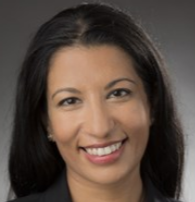Are you wondering if running can lessen the density of your breasts and thus lower your breast cancer risk?
Or maybe they’re mostly fat tissue and you’re afraid that running will bring density to them – and thus raise your disease risk.
What exactly is breast density?
“Breast density refers to the proportion of fat to fibroglandular tissue in the breasts and can ONLY be assessed by imaging,” explains Anjali Malik, MD, a board certified diagnostic radiologist with Washington Radiology in Washington, DC. She interprets mammograms, breast MRIs and ultrasounds, and performs biopsies.
Even a doctor cannot tell if breasts are dense simply by palpating them.
There are four classes of breast makeup, as determined by a mammogram.
• Fatty. Most of the tissue is fat. A thin women can have mostly fatty breasts.
• Scattered. Amid fatty areas are dense areas mixed in but not evenly throughout.
• Heterogeneous. The density is distributed uniformly throughout.
• Extremely. Also uniformly throughout, but just more concentrated.
The risk of breast cancer in a woman with extremely dense breasts is four to six times higher than in a woman with fatty tissue.
This is alarming news to those with dense breasts because, unlike alcohol intake and diet, the breast makeup cannot be modified. Or can it?
Dr. Malik explains, “Breast density varies with age and weight. For many premenopausal women, postmenopausal women and slender women of any age, dense breast parenchyma is secondary to their overall low body fat percentage.
“For other women it is related to their hormone status – postmenopausal women on hormones often maintain their tissue density, while those not on hormones may have decreased fibroglandular tissue with age.”
The Effects of Running
“Active women are more likely to have dense breast parenchyma – again — based on their overall body fat percentage, but in general, breast density cannot be actively changed unless there are marked shifts in weight,” says Dr. Malik.
With that all said, an obese woman with fatty breasts who loses a lot of weight is not guaranteed the development of dense breasts.
And a thin woman with dense breasts is not guaranteed fatty breasts if she packs on weight.
There are trim women, not on hormones, who are already runners or participate in some form of aerobic exercise – but who have heterogeneously and even extremely dense breasts.
There are also obese women who have fatty or scattered compositions.
All in all, running or other rigorous aerobic exercise should not be considered a fix for dense breasts nor will it cause a replacement of fatty tissue with fibroglandular tissue.
 Dr. Malik is a frequent public speaker and advocate for breast health awareness. She has lectured on the latest advances in breast cancer screening including 3D Mammography™. Follow her on Instagram: @AnjaliMalikMD
Dr. Malik is a frequent public speaker and advocate for breast health awareness. She has lectured on the latest advances in breast cancer screening including 3D Mammography™. Follow her on Instagram: @AnjaliMalikMD
 Lorra Garrick has been covering medical, fitness and cybersecurity topics for many years, having written thousands of articles for print magazines and websites, including as a ghostwriter. She’s also a former ACE-certified personal trainer.
Lorra Garrick has been covering medical, fitness and cybersecurity topics for many years, having written thousands of articles for print magazines and websites, including as a ghostwriter. She’s also a former ACE-certified personal trainer.
.










































